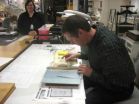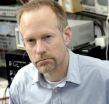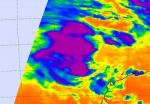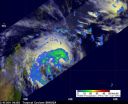(Press-News.org) Richmond, Va. (Feb. 10, 2011) – Scientists at Virginia Commonwealth University Massey Cancer Center have developed a novel treatment strategy for multiple myeloma that pairs two targeted agents to kill cancer cells. The study's findings, published in today's edition of the journal "Blood," are the first to demonstrate the synergistic, anti-myeloma effects of this combination regimen both in vitro and in vivo.
Multiple myeloma is a cancer involving antibody-producing cells in the bone marrow, and, in most cases, is incurable. Targeted therapies work by interfering with biological and biochemical functions critical for cancer cell survival and proliferation. The new treatment strategy from VCU Massey combines Src inhibitors, which block the activity of an important group of proteins that regulate cancer cell behavior, with Chk1 inhibitors, which interfere with cancer cells' ability to undergo cell cycle arrest and repair DNA damage.
"Chk1 inhibitors are currently used primarily in conjunction with conventional DNA-damaging chemotherapeutic agents," says the study's lead investigator Steven Grant, M.D., associate director for translational research, Shirley Carter and Sture Gordon Olsson Chair in Oncology Research and professor of internal medicine at VCU Massey Cancer Center. "By combining Chk1 inhibitors with another targeted agent, such as Src inhibitors, we were able to induce cell death in multiple myeloma cells while sparing healthy, normal cells."
When multiple myeloma cells are subjected to DNA-damaging agents, or even when they are undergoing normal DNA replication, their DNA is subject to breakage. To survive, they must slow down their progression through the cell cycle in order to repair the DNA, or, if the damage is too severe, undergo a form of cell suicide.
Chk1 is an enzyme that allows cells to undergo cell cycle arrest, a process required to repair the DNA damage. When cancer cells are exposed to Chk1 inhibitors, they experience DNA damage and, as a consequence, launch another defense mechanism by activating a protein known as ERK1/2.
"The activation of ERK1/2 explains why multiple myeloma cells are able to survive the lethal effects of Chk1 inhibitors," says Grant. "Therefore, we used Src inhibitors to block the activation of ERK1/2." The results were more promising than even the researchers had hoped.
Grant's team discovered that Src inhibitors not only blocked ERK1/2 activation, but also synergized with Chk1 inhibitors to trigger a dramatic increase in cell death. In addition, the combined treatment greatly reduced blood vessel formation, which plays an important role in the maintenance of many tumors, including multiple myeloma. Significantly, the treatment exerted virtually no effects on healthy, normal cells.
"We found tumors treated with the combined regimen were noticeably smaller and showed signs of a lack of blood supply when compared to tumors from the control group or those treated only with Chk1 inhibitors," says Grant. "This study is not only the first to demonstrate that Src inhibitors can dramatically increase the effects of Chk1 inhibitors, but it is also the first to show that preventing blood vessel formation may contribute to the effectiveness of this combination strategy."
This study builds upon more than seven years of research by Grant's team investigating cell signaling in relation to DNA damage repair and survival pathways involving Src and ERK1/2 proteins. The researchers are now developing more complex experiments as a prelude to clinical trials in multiple myeloma patients. "We're hopeful the approach of combining targeted agents will open up the possibility of developing entirely new therapies for patients with multiple myeloma and potentially other blood cancers," says Grant.
###Co-investigators included the study's first author, Yun Dai, M.D., Ph.D., Shuang Chen, M.D., Ph.D., and Xinyan Pei, M.D., all from the VCU Department of Internal Medicine; and Paul Dent, Ph.D., Universal Distinguished Professor in Cancer Cell Signaling at VCU Massey. Funding for the study was provided by grants from the National Cancer Institute, the Multiple Myeloma Foundation, the V Foundation for Cancer Research and a Specialized Programs of Research Excellent (SPORE) award.
The full journal article is available online at: http://bloodjournal.hematologylibrary.org/cgi/content/short/blood-2010-06-291146v1.
About VCU Massey Cancer Center
VCU Massey Cancer Center is one of only 66 National Cancer Institute-designated institutions in the country that leads and shapes America's cancer research efforts. Working with all kinds of cancers, the Center conducts basic, translational and clinical cancer research, provides state-of-the-art treatments and clinical trials, and promotes cancer prevention and education. Since 1974, Massey has served as an internationally recognized center of excellence. It has one of the largest offerings of clinical trials in Virginia and serves patients in Richmond and in four satellite locations. Its 1,000 researchers, clinicians and staff members are dedicated to improving the quality of human life by developing and delivering effective means to prevent, control and ultimately to cure cancer. Visit Massey online at www.massey.vcu.edu or call 877-4-MASSEY for more information.
About VCU and the VCU Medical Center
Virginia Commonwealth University is a major, urban public research university with national and international rankings in sponsored research. Located on two downtown campuses in Richmond, VCU enrolls more than 32,000 students in 211 certificate and degree programs in the arts, sciences and humanities. Sixty-nine of the programs are unique in Virginia, many of them crossing the disciplines of VCU's 13 schools and one college. MCV Hospitals and the health sciences schools of Virginia Commonwealth University compose the VCU Medical Center, one of the nation's leading academic medical centers. For more, see www.vcu.edu.
VCU Massey first to combine targeted agents to kill multiple myeloma cells
2011-02-14
ELSE PRESS RELEASES FROM THIS DATE:
University of Arizona experts determine age of book 'nobody can read'
2011-02-14
University of Arizona researchers have cracked one of the puzzles surrounding what has been called "the world's most mysterious manuscript" – the Voynich manuscript, a book filled with drawings and writings nobody has been able to make sense of to this day.
Using radiocarbon dating, a team led by Greg Hodgins in the UA's department of physics has found the manuscript's parchment pages date back to the early 15th century, making the book a century older than scholars had previously thought.
This tome makes the "DaVinci Code" look downright lackluster: Rows of text ...
Powerful new ways to electronically mine research may lead to scientific breakthroughs
2011-02-14
The Internet has become not only a tool for disseminating knowledge through scientific publications, but it also has the potential to shape scientific research through expanding the field of metaknowledge—the study of knowledge itself.
The new possibilities for metaknowledge include developing a better understanding of science's social context and the biases that can affect research findings and choices of research topics, according to an article published by University of Chicago researchers in the journal Science. Pooling research-related information online can shed ...
Roses get celery gene to help fight disease
2011-02-14
A rose by any other name would smell … like celery?
North Carolina State University research intended to extend the "vase life" of roses inserts a gene from celery inside rose plants to help fight off botrytis, or petal blight, one of the rose's major post-harvest diseases.
Some fungal pathogens, the bad guys that infect plants, produce a sugar alcohol called mannitol that interferes with the plant's ability to block disease like petal blight, which produces wilty, mushy petals – an effect similar to what happens to lettuce when it's been in the crisper too long.
In ...
JPEG for the mind: How the brain compresses visual information
2011-02-14
Most of us are familiar with the idea of image compression in computers. File extensions like ".jpg" or ".png" signify that millions of pixel values have been compressed into a more efficient format, reducing file size by a factor of 10 or more with little or no apparent change in image quality. The full set of original pixel values would occupy too much space in computer memory and take too long to transmit across networks.
The brain is faced with a similar problem. The images captured by light-sensitive cells in the retina are on the order of a megapixel. The brain ...
Study examines phenomenon of women caring for ex-husbands
2011-02-14
COLUMBIA, Mo. – The aging population, 65 years and older, includes nearly 3.8 million divorced men and women, according to the U.S. Census Bureau. Illnesses and end-of-life issues can be particularly difficult for singles without spouses or designated caregivers. A new study from the University of Missouri provides insight into the experiences of exes who care for their former spouses, offering support, assistance with daily tasks and management of health needs.
"The concept of women as caregivers for their ex-husbands is largely unexplored," said Teresa Cooney, associate ...
NASA infrared satellite data gives System 96S a fair shot at becoming a tropical cyclone
2011-02-14
A low pressure area located a couple of hundred miles northwest of Western Australia appears in a better position for development into a tropical cyclone according to infrared NASA satellite imagery. Infrared imagery from NASA's Aqua satellite shows some strong convection in the low, named System 96S.
When Aqua passed over System 96S on Feb. 9 at 17:47 UTC (12:47 p.m. EST), the Atmospheric Infrared Sounder (AIRS) instrument showed some strong convection and strong thunderstorms with very cold cloud-top temperatures around the center of circulation. Those cloud top temperatures ...
WSU researcher designs multilingual instruction materials for world's largest mall
2011-02-14
Housing 1,200 stores, an underwater zoo, a SEGA indoor theme park, an Olympic-size ice rink, a 22-screen Cineplex and the world's largest gold market, the Dubai Mall is a retail marvel that attracts tourists from around the world. Thanks to one Wayne State researcher, its multilingual, multicultural employees are using an efficient, cost-effective instructional process to learn their job duties.
Monica W. Tracey, Ph.D., associate professor of instructional technology and administrative and organizational studies in WSU's College of Education and resident of Farmington ...
2 NASA satellites see a newborn tropical storm near Madagascar
2011-02-14
Forecasters at the Joint Typhoon Warning Center were keeping a close eye on a low pressure area known as System 94S yesterday, and satellite data helped confirm that today it has strengthened into Tropical Storm Bingiza.
The Moderate Resolution Imaging Spectroradiometer (MODIS) instrument aboard NASA's Terra satellite captured this image of Tropical Storm Bingiza at 06:30 UTC (1:30 a.m. EST) on its approach to Madagascar. The highest, strongest thunderstorms appeared almost bubble-like near the center of the storm's circulation.
The Tropical Rainfall Measuring Mission ...
321Soft Announces New Release of Data Recovery for Mac 5.0.0
2011-02-14
321Soft Data Recovery for Mac is professional and user-friendly Mac data recovery software to recover data lost due to accidental deleting, formatting, virus infection, unexpected power failure, and other unknown reasons. It compatible with HFS+, FAT16/32, NTFS ISO9660, UDF, and EXT2/3 file system volumes, It is non-destructive data recovery software and will not write or make changes to the drive it is recovering from. all recovered files must be saved to another storage device or another drive letter in the system.
Key Features of 321Soft Data Recovery for Mac 5.0.0 ...
Changing views about saturated fat and cardiovascular disease
2011-02-14
(Rosemont, IL) Feb. 10 – For generations, the consumption of dairy products has been positively associated with the health and wellness of families and communities. Nevertheless, the recent shift in dietary trends has focused on "what not to eat" instead of emphasizing "what to eat," resulting in demonizing the naturally occurring fats in dairy, while overlooking its many essential nutrients.
However, the long-held beliefs about the impact of saturated fatty acids (SFA) on the risk of cardiovascular disease (CVD) are being challenged by a new perspectives paper from ...





